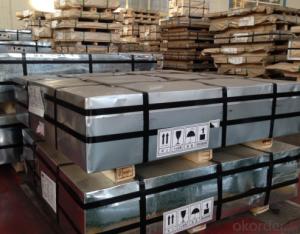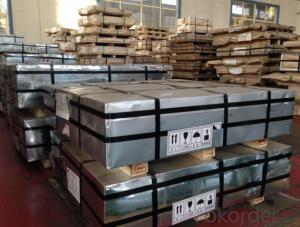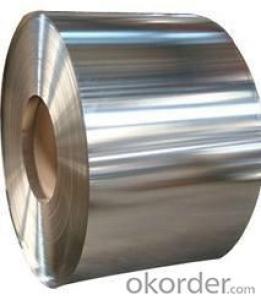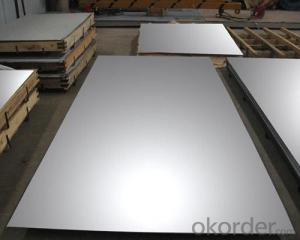Electrolytic Tinplate in Sheets and Coils for Cans Packing in good quality
- Loading Port:
- Tianjin
- Payment Terms:
- TT OR LC
- Min Order Qty:
- 25 m.t
- Supply Capability:
- 7000 m.t/month
OKorder Service Pledge
OKorder Financial Service
You Might Also Like
1.Structure of Electrolytic Tinplate in Sheets and Coils for Cans Packing Description
Due to Tinplate packaging`s good seal, nature, dark, robustness and unique decorative metal charm, it has a wide range of coverage in the packaging container industry,and common international packaging varieties. With a variety of CC tinplate material, DR materials, chrome plated and constantly enrich and promotion and development of packaging products and technology, tinplate packaging has promoted with innovation.
Because of its strong antioxidant and diverse styles, beautifully printed, tinplate containers are very popular and loved by customers, and they are widely used in food packaging, pharmaceutical packaging, commodity packaging, instrumentation, packaging, industrial packaging and so on.
With the continuous improvement of tinplate printing technology and processing technology, tinplate packaging has developed more widely.
2.Main Features of the Electrolytic Tinplate in Sheets and Coils for Cans Packing
Appearance – Electrolytic Tin Plate is characterized by its beautiful metallic luster. Products with various kinds of surface roughness are produced by selecting the surface finish of the substrate steel sheet.
Paintability and printability – Electrolytic Tin Plates have excellent paintability and printability. Printing is beautifully finished using various lacquers and inks.
Formability and strength – Electrolytic Tin Plates have got very good formability and strength. By selecting a proper temper grade, appropriate formability is obtained for different applications as well as the required strength after forming.
Corrosion resistance – Tinplate has got good corrosion resistance. By selecting a proper coating weight, appropriate corrosion resistance is obtained against container contents. Coated items should meet 24 hour 5 % salt spray requirement.
Solderability and weldability – Electrolytic Tin Plates can be joined both by soldering or welding. These properties of tinplate are used for making various types of cans.
Hygienic – Tin coating provides good and non toxic barrier properties to protect food products from impurities, bacteria, moisture, light and odours.
Safe – Tinplate being low weight and high strength makes food cans easy to ship and transport.
Eco friendly – Tinplate offers 100 % recyclability.
Tin is not good for low temperature applications since it changes structure and loses adhesion when exposed to temperatures below – 40 deg C.
3.Electrolytic Tinplate in Sheets and Coils for Cans Packing Images
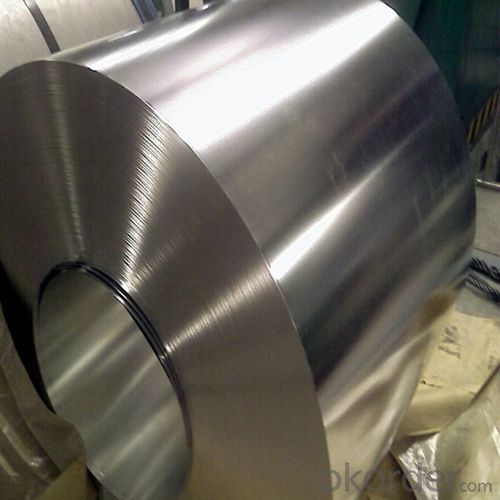
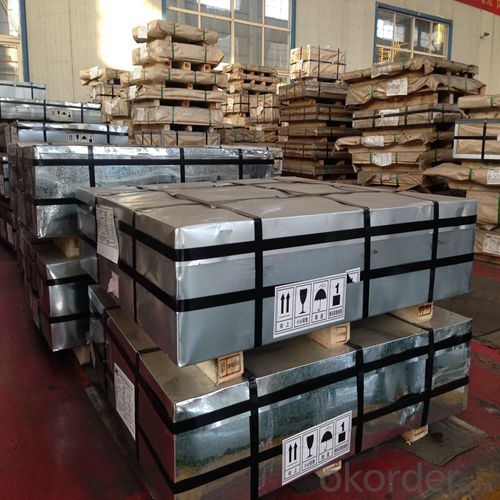
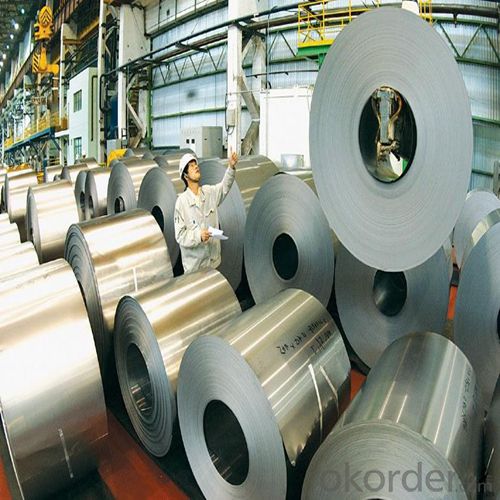
4.Electrolytic Tinplate in Sheets and Coils for Cans Packing Specification
Standard | ISO 11949 -1995, GB/T2520-2000,JIS G3303,ASTM A623, BS EN 10202
|
Material | MR,SPCC |
Thickness | 0.15mm - 0.50mm |
Width | 600mm -1150mm |
Temper | T1-T5 |
Annealing | BA & CA |
Coil Inner Diameter | 508mm |
Weight | 6-10 tons/coil 1~1.7 tons/sheets bundle |
Passivation | 311 |
Oil | DOS |
Surface | Finish,bright,stone,matte,silver |
5.FAQ of Electrolytic Tinplate in Sheets and Coils for Cans Packing
- How are the Electrolytic Tin Plates specified?
The Electrolytic Tin Plates are specified as per the steel base, extent of tempering, the coating weight, annealing method and the surface finish.
- How many types there are for base steels?
The base steels are of three types: Type MR, L, D
- Q:How does tinplate impact the overall product design?
- Tinplate impacts the overall product design by providing a durable and corrosion-resistant material that can be easily formed into various shapes. Its versatility allows for intricate designs and details, making it suitable for packaging, containers, and canning. Additionally, tinplate's smooth surface allows for vibrant printing, enhancing the visual appeal of the product. Overall, tinplate plays a crucial role in ensuring the functionality, aesthetics, and longevity of the product design.
- Q:What are the main applications of tinplate in the aerospace industry?
- Tinplate is commonly used in the aerospace industry for various applications such as manufacturing aircraft components, including fuel tanks, hydraulic systems, and electrical connectors. Its corrosion-resistant properties make it ideal for protecting these components from environmental factors, ensuring their longevity and reliability. Additionally, tinplate's high strength-to-weight ratio makes it an excellent choice for lightweight construction, contributing to fuel efficiency and overall aircraft performance.
- Q:What are the benefits of using tinplate for electrical components?
- Tinplate offers numerous benefits for electrical components. Firstly, it provides excellent corrosion resistance, ensuring the longevity and durability of the components. Secondly, tinplate has excellent solderability, making it easier to connect and assemble electrical circuits. Additionally, tinplate is a good conductor of electricity, allowing for efficient flow of electrical currents. Lastly, it is a cost-effective option, as tinplate is readily available and relatively inexpensive compared to other materials.
- Q:What are the different types of tinplate printing techniques?
- There are several types of tinplate printing techniques, including offset lithography, screen printing, and digital printing.
- Q:How is tinplate formed into different shapes?
- Tinplate is formed into different shapes through a process called cold forming or deep drawing, which involves pressing the tinplate against a die to reshape it into the desired shape.
- Q:What are the main advantages of using tinplate for electrical enclosures?
- The main advantages of using tinplate for electrical enclosures include its high strength and durability, excellent corrosion resistance, and good electrical conductivity. Tinplate is also lightweight and easy to form, making it a cost-effective choice for manufacturing enclosures. Additionally, tinplate is recyclable, making it an environmentally friendly option for electrical applications.
- Q:Can tinplate be used for HVAC systems?
- Yes, tinplate can be used for HVAC systems. Tinplate is a durable and corrosion-resistant material that is commonly used in the manufacturing of HVAC components such as ductwork, vents, and fittings. It provides excellent protection against moisture and can withstand high temperatures, making it suitable for HVAC applications.
- Q:How does tinplate perform in terms of moisture barrier properties?
- Tinplate demonstrates excellent moisture barrier properties due to its inherent corrosion resistance and the presence of a thin tin coating on its surface. This coating acts as a protective barrier, preventing moisture from penetrating the tinplate and maintaining the integrity of the packaged product.
- Q:Is tinplate resistant to scratches and dents?
- Yes, tinplate is resistant to scratches and dents.
- Q:How is tinplate printed and decorated?
- Tinplate is commonly printed and decorated using various methods such as lithography, offset printing, and digital printing. These techniques involve applying ink onto the tinplate surface using specialized machines and equipment. The design or artwork is transferred onto the tinplate through a series of steps, including image preparation, plate-making, and printing. This process allows for vibrant and detailed designs to be applied to the tinplate, enhancing its visual appeal and marketability.
1. Manufacturer Overview |
|
|---|---|
| Location | |
| Year Established | |
| Annual Output Value | |
| Main Markets | |
| Company Certifications | |
2. Manufacturer Certificates |
|
|---|---|
| a) Certification Name | |
| Range | |
| Reference | |
| Validity Period | |
3. Manufacturer Capability |
|
|---|---|
| a)Trade Capacity | |
| Nearest Port | |
| Export Percentage | |
| No.of Employees in Trade Department | |
| Language Spoken: | |
| b)Factory Information | |
| Factory Size: | |
| No. of Production Lines | |
| Contract Manufacturing | |
| Product Price Range | |
Send your message to us
Electrolytic Tinplate in Sheets and Coils for Cans Packing in good quality
- Loading Port:
- Tianjin
- Payment Terms:
- TT OR LC
- Min Order Qty:
- 25 m.t
- Supply Capability:
- 7000 m.t/month
OKorder Service Pledge
OKorder Financial Service
Similar products
New products
Hot products
Related keywords
